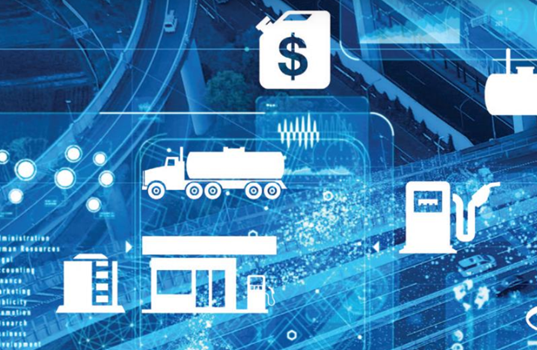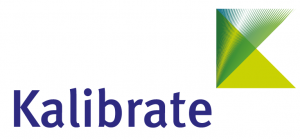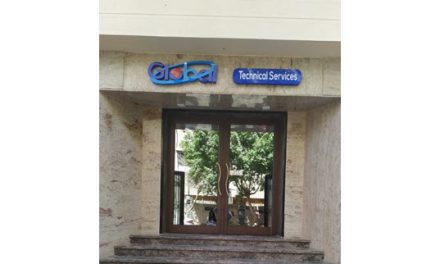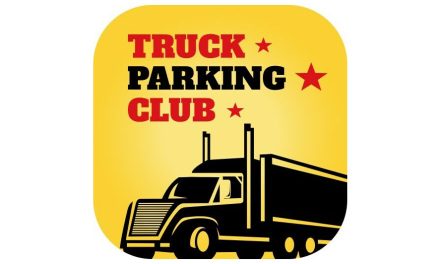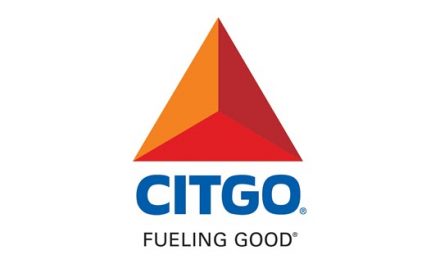By Keith Reid
Fuel price modeling analytics have been around for about 20 years or so. The concept, at its most basic, looks to digitally model consumer fuel purchasing behavior relative to price, traffic patterns and competitors in relation to volume and margin. The traditional method has been to have store managers scout local competitors, and then have the person responsible for setting fuel prices use cost and “gut feeling” to figure out how to proceed. It can be a proactive process, or reactive. Quite often it has been “look at what X is doing and let’s match it or be a penny lower.”
And, historically that worked very well. It can still work well today. But fuel procurement has become far more complex and the market more volatile, and, there has always been missed opportunity. Price modeling analytics is not used as a tool to replace the human factor, but to enhance those capabilities. What if you could charge 2 cents more, maybe 5 cents more and not lose volume? What if you could afford to be 3 cents less and steal volume? While consumer behavior is heavily focused on price, there are other factors involved. Those factors can change multiple times per day. How do you quantify and adjust to that?
Price modeling analytics has grown from more of a niche concept to one increasingly practiced by the larger and mid-sized competitors. While economies of scale can come into play where ROI is concerned, the size of operation that can benefit keeps decreasing.
FMN decided to look at three of the main players in the field for a quick rundown on their solutions.
PDI, a leading global provider of enterprise software solutions to the convenience retail, wholesale petroleum and logistics industries, acquired Inform Information Systems, Ltd. (known commercially as FuelsPricing) in 2018. Headquartered in the UK, FuelsPricing has experience providing analysis and pricing for more than 35,000 retail service stations and over 100,000 business-to-business shipping locations for petroleum wholesalers. It services customers in over 50 countries, ranging from independent retailers to large, multinational integrated oil companies. One pitch for the PDI solution is that it integrates with the range of back office/enterprise/loyalty solutions offered by the company.
FMN interviewed Niels Skov, PDI’s SVP, Fuel Pricing Solutions, for information on their solution.
FMN: Tell us about the solution.
Skov: It was developed in very close collaboration with customers, so the solutions that we have are tailored to their specific processes and to the specific problems they have in the marketplace. It handles the significant data intensity that exists in this area. For example, incorporating competitive prices, the latest in network planning, loyalty programs, et cetera, which are all solutions that are now available in the PDI portfolio.
In the solution itself we have techniques that we refer to as market clearing pricing and market clearing mechanics, which are all part of our price optimization solutions. They take into account the various specific supply demand conditions and therefore the pricing sensitivity and mechanics of particular sites.
FMN: How do you develop the data to build up an individual site model?
Skov: The sale point data is accumulated in our systems and tools and feeds into the analytics capabilities so that price managers can run sophisticated scenario-planning based on historical data from their own business and the old price points. That’s the first point. Secondly, we collect competitive pricing as well. So, focused on specific site environments, it’s set up with relevant competitive price points that need to be considered. Then, now as a part of PDI, a lot of information comes from loyalty programs that enable specific pricing for individual consumers to a degree that we think the industry has not seen in any systematic way. We’ve been working with a number of customers around this and we think that combination is something the marketplace will find extremely useful in the future.
You can optimize your pricing in relation to the traffic of trade that is going through your sites in almost any imaginable way. The richness of data and information that price managers and commercial leaders have at their fingertips is very substantial, and we think is unique in the marketplace.
FMN: How often might prices be adjusted during a day?
Skov: That depends on how many times your supply and demand dynamics change down to the site location. For example, do you have a rush hour where the customer flows and queues at your site will accumulate at a particular time? Do you have a competitive environment and a competitive pricing dynamic? In other words, all the drivers of your supply and demand situation for this specific site would play a role in that answer.
We observe some market locations where the number of changes can be very high. Sometimes more than 20 times a day. For others, you might want to change it once every three days. It comes back to the importance of understanding your price sensitivities and the volume price relationship that you have with the sites, if you have the underlying data and information.
FMN: How receptive is the industry to the technology today?
Skov: There’s a substantial amount of receptiveness to the idea, and I think there are a couple of fundamental reasons for that. The first one is that price managers and commercial leaders are very knowledgeable about their world. And, technology-wise, these capabilities that are available for the first time in the marketplace drive adoption. Companies have been trying to achieve similar goals, but with very rudimentary set-ups and systems and often very manual in nature—even down to pen and paper, spreadsheets, et cetera. And, when companies grow and operations start to scale that just becomes harder to do. So that is releasing a lot of latent demand, and I would suggest that is the single most important aspect of taking these solutions to market.
FMN: What are the benefits with using price analysis?
Skov: I think that the benefits are very substantial, and they play out in different ways. There are the specific benefits of enhancing volume and price and therefore your margin achievements for an operation down to a specific site. I have personally seen margin improvements above of 10 percent. So, we have seen some very substantial results.
I will also say though that there are substantial benefits from a commercial agility and strategy level that you get from really understanding the behavior of your underlying customer base for a particular site using the data points and the analytics. You become more data driven, you can react faster to movements and you become cleverer in comparing current conditions to similar scenarios in the past.
I think that the decisions related to your network, the content of the store, the way you optimize it and the way you fine-tune your pricing strategy based on the particular customer scheme, et cetera, is very rarely available if you manage these things manually. Once you are set up and you have the actual price points, you can observe over time and understand the effects of your pricing strategies to a degree of detail that is rarely possible otherwise.
FMN: How should a retailer prepare to implement these solutions?
Skov: The two main considerations are process and data. If you have a good degree of maturity in those areas, then I would say there is nothing that should stand between you and the ability to make good use of the available technology options that exist today. It’s going to be rare for us to come across companies, even down at the mid-size or smaller-size segments of the marketplace, where this technology is cost prohibitive or too difficult to implement.
Based in Colorado Springs, PriceAdvantage is a privately held U.S. company founded on nearly 45 years of retail fuel marketing experience. Its parent company, Skyline Products, produces retail software solutions and thousands of American-made gas price and transportation signs annually. From a single, easy-to-use interface, PriceAdvantage can help streamline fuel pricing processes, enabling a retailer to “push the right price to the right stores at the right time.” According to the company: gain control of your fuel pricing; reduce manual processes and human errors; use your unique pricing strategy by store, region or entire chain; and increase margins by posting new prices to POS, signs and pumps in 15 minutes or less.
FMN interviewed John Keller, PriceAdvantage Division Director, for information on their solution.
FMN: Tell us about the solution.
Keller: We see two fundamental aspects to the value proposition that Price Advantage provides. And depending on the environment and the sophistication of the retailer, they’ll be taking advantage of one or both of those aspects.
The first is aspect of it is price determination—the price modeling. There are nuances to that. There’s the standard stuff where you say: I understand the business; I understand who my competitors are. I’ve got to implement these business rules and be able to reduce the time to reaction of a competitor’s movements and/or a rack cost change. I want to make sure I’m considering my actual costs, my in-ground costs and my volume performance—any of these key performance indicators. We’ve had that for a long time, and we keep enhancing the sophistication of those business rules based on the feedback.
The second is the price execution to the street—getting that price out there to the point of sale, to the pump and ideally to the electronic sign. Although if you don’t have an electronic sign, at least you’re notifying folks to get out there and get their manual signs adjusted. That is both consumer and commercial through our recent integration with Comdata. Part of the workflow is making sure that you’ve received a confirmation message that the price change has been completed. Ideally you can remove the store personnel from the price change execution side. It frees up employees to service customers and ensure changes don’t get overlooked. Another aspect is that sometimes you have a dealer relationship where they are compensated based on their store profits. There might not be as much interest in raising prices as requested, at least in a timely manner.
FMN: What are some of the insights that come from data analysis?
Keller: We had a customer say they were always convinced that it made most sense to change their price first thing in the morning. And then they did an analysis and their conclusion was, oh my gosh, it’s much better if we sit tight in the morning and make our price changes in the afternoon because overall profitability is just that much stronger. And you know, there are different theories behind that in terms of consumer behavior. They might be driving to work but don’t have time to get gas, but they are looking at the signs and seeing who’s got what price. Then on the way home from work, when they have more time, they’ve already made the buying decision in the morning.
FMN: How does the analysis play out with the location as a general profit center beyond just fuel?
Keller: There are the nuances like considering the correlation between in-store transaction product by product, or by the number of transactions and the volume and sales of fuel. We’re able to import all these different categories of non-fuel related SKUs.
There’s this age-old debate between the marketing folks who are focused on the inside gross revenue or gross profit and the fuel guys who are primarily focused on the gallons and the margins. Oftentimes you’ll have the in-store folk tell the fuel guys hey, we need to get our inside sales up. All we have do is just drop our fuel price by a penny or two. And then you have the fuel guys saying time out, that’s a myth. The competitive reaction is they are going to match us and all we’ve done then is lowered our margin. So, with these correlations we can see whether or not this strategy is working. The beauty of it is you can run an analysis for a very specific timeframe with a particular strategy in place and see how it does. Then you tweak that strategy and analyze it again to see if it made a difference.
FMN: How do you get buy-in for this change in an operation?
Keller: It is something you’ve got to address it from a change management perspective. You have folks in the field who’ve been doing it one way for 20 to 30 years and they’ve been autonomous and then suddenly you introduce these folks “back at corporate” who think they know better. The initial reaction might be: why do they think they understand my market better than I do? So, it takes some gentleness and some coaxing to build the trust. Some district managers are more concerned and don’t want to give up their control. They want to be convinced that you’re going to do this right before they just hand over the keys. Others are just happy to let go and shift their time to other functions.
FMN: What are the bottom line benefits to the retailer?
Keller: People don’t want us to share many specifics, but we’ve heard repeatedly that they are breaking records from a gross profit standpoint. Every one of our customers has told us that from an operational standpoint and from a gross revenue standpoint it’s just been tremendously successful and pays for itself as quickly as in several months.
For over 25 years, Kalibrate has advised fuel and convenience retailers worldwide on how to be best-in-class operators in the fast-changing marketplace. Through the years, Kalibrate has brought together global strategic expertise and data science with software solutions to become the authority in fuel pricing, location planning, market data and traffic count data. These solutions have been deployed in over 70 countries with hundreds of clients of all sizes, including oil companies, convenience stores and supermarkets. Its retail intelligence software is backed by people who offer insight—not just analytics—so every retailer can better capitalize on opportunities.
FMN interviewed Mark Hawtin, Managing Director, Kalibrate Pricing, for information on their solution.
FMN: Tell us about the solution.
Hawtin: One of the big things that’s really changed our perspective on fuel pricing is to gain a better understanding of what draws consumers to a given retail outlet. Is it the location? Is it the brand? Is it the way they price? Is it because we’ve got great facilities? Is it because they have a great dealer or group of associates that are operating the site?
Before you think too deeply about how you price you really need to look at why the consumers come to that particular outlet, and what are the other levers that you might be able to pull in order to drive more consumers to an outlet. These are what we call our volume magnets. So, a lot of what we do now is we help our customers understand why people come to you versus a competitor, and you then know how much pricing power that gives and how you can turn those customer visits into profits.
FMN: That obviously implies a lot of data for analysis.
Hawtin: We are about to release version 3.0 of our Kalibrate pricing product, and the single biggest movement forward in that is over a couple of million dollars’ worth of investment on the data side.
Clearly one of the big problems that’s been apparent in most industries, and definitely for convenience retail, is the prevalence of more and more data about consumers, the site environment, weather, demographics, people movement, traffic movement…. Gone are the days where all you needed were a couple of competitive prices, a little bit of volume information and cost. Retailers now can bring a lot more data to bear about what’s happening in their environment. It’s not only on their own sites but on competitive sites, and to try to find ways to leverage their own pricing strategies and their own pricing tactics to take advantage of that.
With very little additional data requirements from the client we can begin to automatically segment any given day into demand segments. We all know intuitively that there is usually a rush hour period during the morning and one in the late afternoon and in between demand is more relaxed, and the dynamics are somewhat different. But you lack the nuance involved with that insight, and, more importantly, how much more sensitive, or not, are consumers during those different day parts. We now have the scientific ability to let the data tell us that rather than rely on intuition.
FMN: How receptive do you see the market being for such solutions?
Hawtin: I think what we’re seeing in the U.S. now is with all the consolidation of players, the underlying trend is that there are more people coming into the workforce that are pre engaged to use more advanced analytical techniques. With the advent of more technology being deployed, even in operators down to the folks that run mom and pop sites, there is a general environment in which technology is becoming almost table stakes in some areas of the business. If you don’t deploy technology, you’re going to be automatically at a competitive disadvantage.
I think we are now getting past the idea that you have to have been a fuel pricing manager for 15 years to be good at it. And for those experienced fuel managers, as markets become more volatile, it’s now recognized that people need tools to help them keep up.
FMN: How does your solution scale?
Hawtin: The sweet spot for more sophisticated pricing is going to be in hundred-plus operations because they’ve got more data to be able to leverage. They’re very concerned about operational efficiencies. The core of what we address is to be as operationally efficient as you can be from the price decision to pump. We’ve seen some super growth in what I would call the hype majors—the 7-Elevens, Circle Ks, Marathons of the world. I think the place for us to grow in the future is in the 15- to 100-site segment. We’ve seen larger growth there than in the past, but we have more work to do.
FMN: What are your clients seeing from a return on investment (ROI) standpoint?
Hawtin: With every potential client we conducted a discovery process to really understand how much value this might generate for them, and we work toward a six-month or better return on investment. We make sure that whatever we pitch, we can back up with a business case. I think the most extreme business case was seven weeks. We operate typically on three- to five-year subscriptions, and we want it paid for well within the first year of a three-year deal.
Starting to use smart analytics and optimization is where you really make the big bucks. Now, if all you’re interested in is the operational efficiencies, in other words, getting prices from the point of decision to the pump, POS and price sign, then the ROI might take a little longer—maybe an eight-month payback. It’s pretty easy to measure the impact both on volume and profit depending on your strategy, so it’s fairly easy to measure payback.


